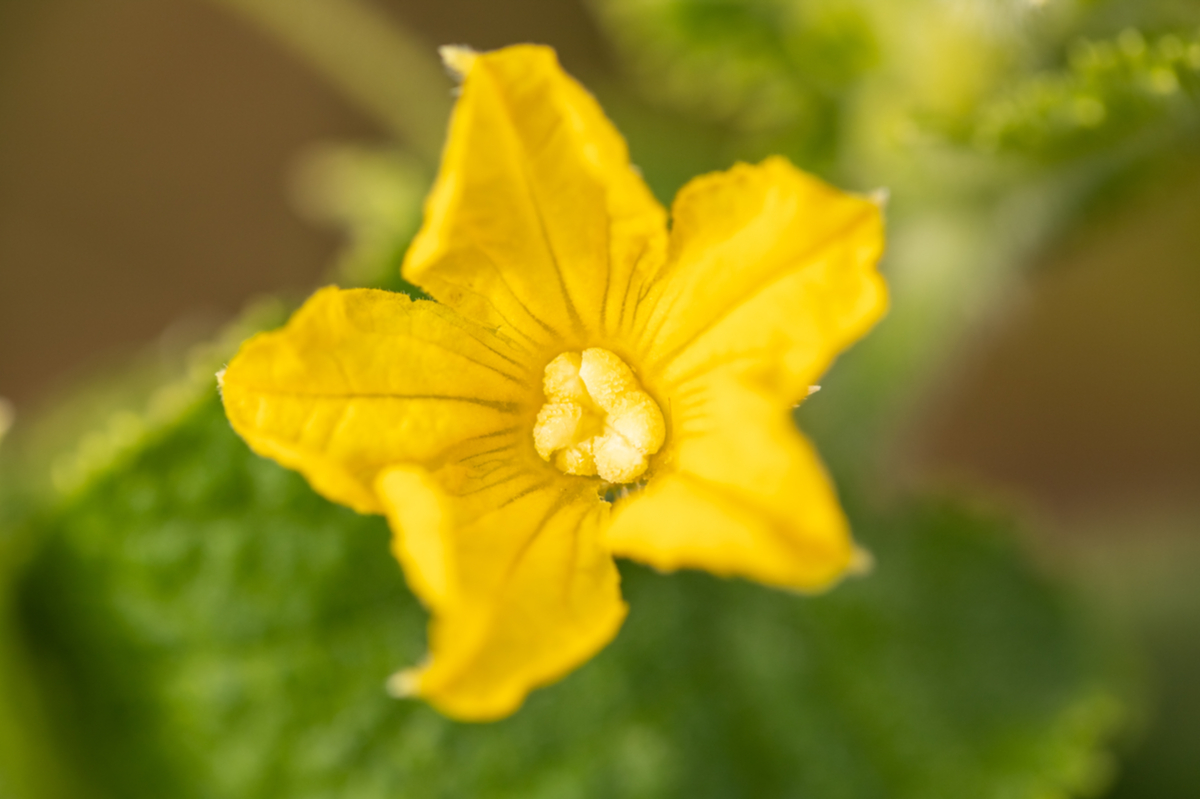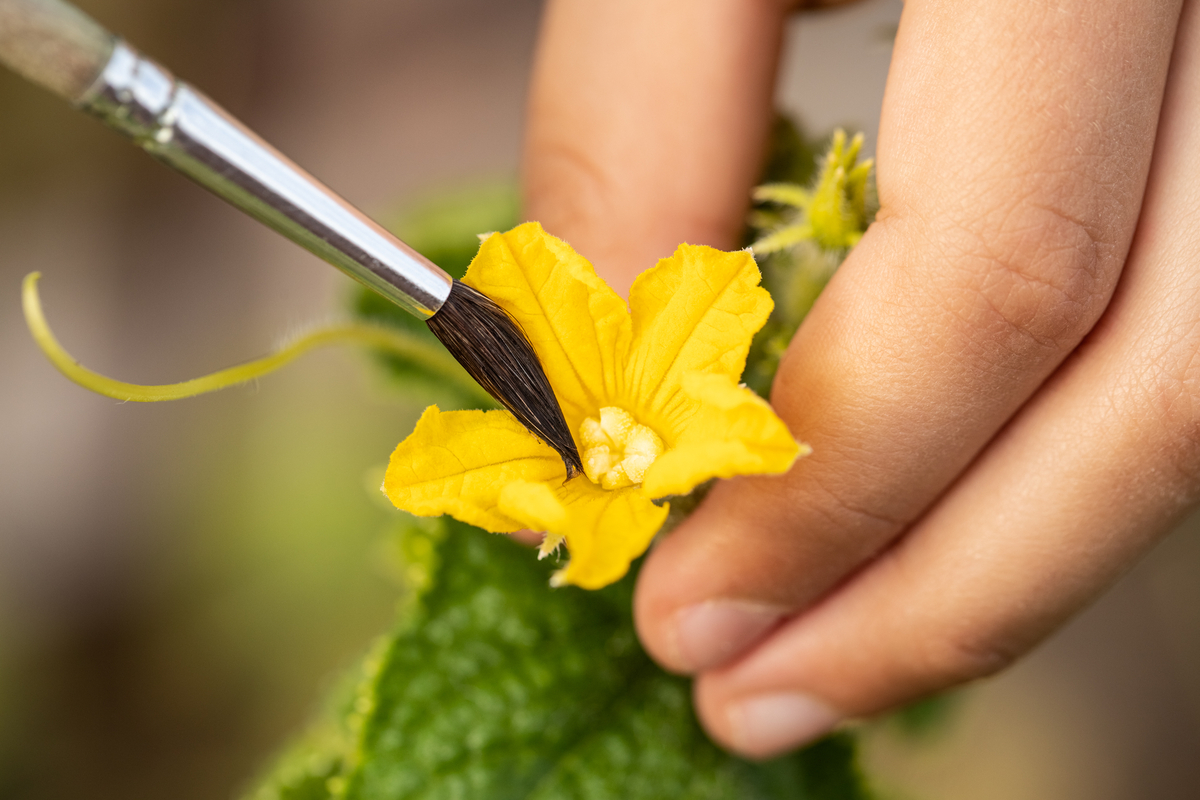Cucumbers are a versatile plant. They can grow over almost anything, climbing whatever is in reach, and the vegetables are just as versatile. Before you can cook, roast, bake, or boil your cucumbers, though, you have to grow them first. If you’re having difficulty with plants blooming but not producing, read on to learn about the process of pollinating cucumbers for your garden.
Why is hand-pollination a good idea?
Cucumber flowers need to be pollinated to produce cucumbers, but they aren’t a favorite flower of pollinators. This results in a lot of cucumber flowers going unpollinated, which means you aren’t getting as many cucumbers as you could be!
Luckily, cucumber vines produce both male and female flowers and are self-pollinating. This means that the pollen from the male flowers can be used to pollinate the female flowers of the same plant.
Hand-pollinating your cucumber plants is a simple way to increase the number of cucumbers you harvest from your plant. It also tends to result in larger cucumbers, although that can also depend on the variety of cucumber you have.

Hand-pollinating with the stamen
Hand-pollinating with the stamen of the flower is one way to help your cucumbers out. First, identify the male flowers and the female flowers. Male flowers tend to bloom in clusters, while females bloom by themselves. Male flowers also have a stamen, a protrusion that has pollen. The female flowers, on the other hand, have small, bowl-like stigmas.
To pollinate with the stamen, you need to remove the stamen from the male flowers. Depending on your confidence and dexterity, you can either remove just the stamen or pick the entire flower and then peel back the petals.
Male flowers wilt and fall off after their pollen is spent, so don’t feel bad if you choose to pick the flower! The only noticeable difference is that some people find one method easier than the other.
Once you have the stamen, rub it against the sigma so that the pollen moves from one to the other. The pollen is very sticky, so you don’t have to apply very much pressure, and, as the pollen is yellow, you should be able to see when it is attaching. One stamen can provide pollen for two or three females, so you don’t have to worry about running out.
Hand-pollinating with a tool
Hand-pollinating with a tool is very similar to hand-pollinating with the stamen. You still need to identify the male and female flowers, and you still need to move the pollen from one to the other.
There are a variety of tools you can use for this method of pollination, but the most common are paintbrushes and cotton swabs. Paintbrushes give you a little more dexterity, while cotton swabs are often a little easy for the pollen to stick to. Whichever tool works best for you is fine; just make sure it’s something that can collect pollen.
Once you’ve chosen your tool, you need to brush it along the stamen to collect the pollen. This part can be a little tedious, so take your time and remember to take breaks if you start to get frustrated. Depending on the tool you’re using, you may or may not be able to see the pollen adhering.

When the pollen is on your tool, brush it along the stigma of the female flowers. It only takes a little bit of pollen, so don’t worry if you can get all the pollen off the stamen or off the tool you’re using.
Other ways to encourage pollination
If you want to encourage pollination without doing it by hand, the best way to do so is to increase the variety of plants in your garden. Add some pollinator-friendly native wildflowers to your garden, like coneflowers or blanket flowers!
If you’d like to keep your garden strictly vegetables, adding tomatoes and beans to your garden can attract more pollinators. Tomatoes and beans are also climbers, so be sure to have plenty of space available for them!
Plants have naturally evolved over time to partner with pollinators, but sometimes they need a little help. If you have a cucumber vine that needs it, now you know the best and easiest ways to become a pollinator yourself!
Editors' Recommendations
- Plant these stunning flowering shrubs for a showstopping garden display this spring
- 3 incredible reasons why you should be using coffee grounds in your garden
- Have a gross mealybug infestation on your plants? Try one of these remedies
- These plants should be among the first you plant this year
- Unique and whimsical flowers to add to your collection for a fairy-tale garden landscape this spring





